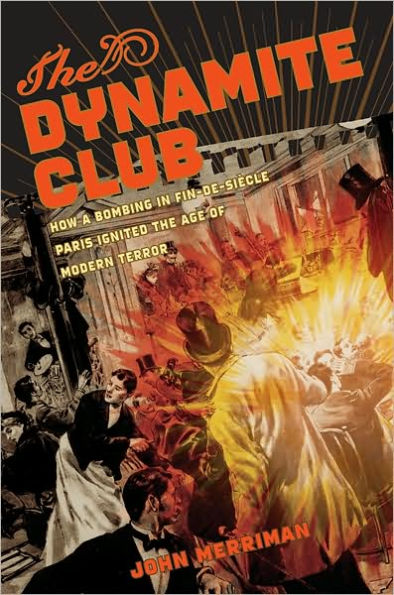
Reading a book on nineteenth-century anarchism by John Merriman is a bit like reading one on the semicolon by Strunk and White. Merriman’s A History of Modern Europe (1996) is perhaps the best survey of the era, but by narrowing his scope from five hundred years of Continental history to a few bomb-throwing anarchists in Belle Epoque France, he is able to pack in riveting detail. The Dynamite Club covers the rise of anarchism in France between the 1871 Paris Commune and the execution, in 1894, of Émile Henry for the deaths and injuries resulting from his bombing of a police station and a café. Though Merriman catalogues the destabilizing effects of two decades of anarchist terror, Henry’s attacks are given center stage because they were among the first to target civilians.
In A History of Modern Europe, Merriman devotes little more than two pages to nineteenth-century anarchism and just one line to Henry’s attack. But even though the movement was a marginal part of the politics of the time, its adherents produced a formidable body count, including six heads of state (the last was American president William McKinley). Europe was unprepared: The combination of freedom of movement (only Russia required a passport for entry) and the ease of obtaining dynamite allowed a relatively small group to wreak far-flung havoc. As one anarchist newspaper put it, “A pound of this good stuff beats a bushel of ballots.”
In Paris, many of the anarchists lived in Montmartre (where the Sacré-Coeur Basilica was still under construction) and Belleville. While Henry’s middle-class family was sympathetic to leftist causes, it was in these working-class neighborhoods, to which Henry moved, that he became radicalized. Merriman avoids psychoanalyzing the budding anarchist, but the reader does glimpse him as a well-behaved student, see his anguish at his father’s death, and get a taste of his unrequited love for a fellow anarchist’s wife. Of Henry’s motivations, Merriman concludes, somewhat weakly, that a sense of “injustice plagued Émile, an extremely sensitive young man.” The charge of oversensitivity is also leveled by his brother, mother, and friends, making Henry seem more like an emasculated undergraduate than a fearless, brooding Bazarov.
Merriman’s refusal to speculate in order to fill in historical blanks occasionally fragments the tale, but when he turns to moments in Henry’s life that are better documented, the narrative becomes fine-grained, almost cinematic: “Blood splattered the walls” at the police station, a customer at the café claims that he thought the package Henry threw into the middle of the crowd “might contain a large Camembert,” and, at the guillotine, the executioner’s shoes “scraped against the cobblestones as he hobbled along, occasionally leaning on his cane.”
Henry bombed the café on the evening of February 12, 1894. By two-thirty the next afternoon, the restaurant was again open for business. Anarchism briefly dominated the headlines, but terrorism has proved to be a minor theme in the history of the Third Republic. Could the same eventually be said about terrorism in this republic? In his prologue, Merriman admits that the temptation to draw parallels is “irresistible”: “Embroiled in our own ‘war on terror,’ it may well be instructive to look to the past for insight.” Perhaps this explains his decision, in the final chapter, to note the government’s move, after Henry’s death, from executions to amnesty for most radicals, from the use of repression to “the power to convince.” That alone, rather than the thud of the guillotine’s blade, ended the cycle of violence.

